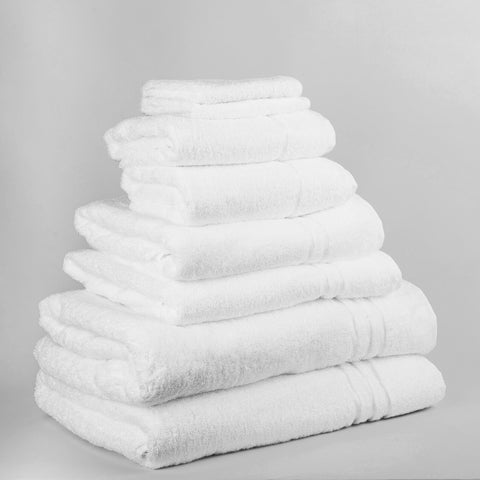Think posh sheets are all about thread count? Want Egyptian cotton because people say it’s the best? With so many confusing myths about linen and towels we thought we’d give you the facts straight from our very own ‘expert of luxury bed linen’ Joe Molloy

Myth 1 : Egyptian cotton is best
We say: Look for products that contain a high quality long staple cotton from a retailer you can trust.
Forever quoted as synonymous with luxury bedding, the main attraction of Egyptian cotton is that it can be used to make long staple yarn. Using long staple over short staple yarn helps produce cloth that is softer and smoother to the touch, both very desirable characteristics of high quality bedlinen.
Thankfully the production of cotton to make long staple yarn is not the sole preserve of Egypt’s Nile Delta, and not all cotton grown in the region produces long staple yarn. Given the worldwide supply of so-called ‘Egyptian cotton’ far outstrips the physical production, it’s easy to see why confusion and misinformation reign supreme.
Myth 2 : Posh sheets have a high thread count
We say: 300tc or 400tc linens woven from good quality cotton will have all the luxe factor you need.
It’s hard to debunk this myth without a little bit of ‘geek’. Thread count refers to the number of horizontal and vertical threads in a square inch of cloth. So, in a 200tc cloth you might have 110 threads running vertically and 90 running horizontally; in a 400tc, you might find 280 horizontal and 120 vertical threads. The problem begins when you increase the thread count as the threads need to be packed tighter together, creating an impermeable barrier that makes the fabric less breathable and potentially harder to launder. Think wrinkles on a grand scale. Manufacturers may also twist multiple individual threads together to artificially boost the thread count, as BBC journalists recently discovered when investigating linen at some very well known stores.
Myth 3 : Fabric softener fluffs up towels
We say: It’s always better to go au-naturel when it comes to towelling.
Fabric conditioner coats the loose cotton fibres with a waxy finish, which actually prevents the towel from doing its job. Our advice is don't use it. Dry outside ideally or, if not practical, on an indoor airer overnight. Avoid radiators and if using a tumble dryer, make sure there is a cool down time as part of the drying cycle to allow the yarns time to recover and prolong the life of your towels.

Myth 4 : Percale and sateen are much of a muchness
We say: Nothing beats the look and feel of pure cotton bedlinen whatever your weave.
While percale and sateen both rank high in the popularity stakes, that’s where their similarities end. Percale is a plain weave (180 thread count +) in which one horizontal thread goes over and then under one vertical thread. This simple construction gives linen a crisp, fresh spring-like feel. In contrast, sateen is a different form of weaving that produces a cloth that generally flows and drapes a little better than its percale counterpart, with a higher lustre and more silk-like appearance.
To replicate the hotel-at-home look, consider a 300tc sateen made using long staple yarn. Breathable, easily to launder and with a beautiful drape, it’s pretty much the go-to favourite for our luxury B&Bs and 5* hotels.

Myth 5 : Down pillows win hands down!
We say: It’s totally personal! As a rule of thumb more feather equals more support.
The type of pillow you need can depend on the way you sleep. But unless you love cloud-like softness you’ll probably want a mix of feather (support) and down (softness and warmth). How much feather you need depends on how firm you want your pillow to be, but a good hotel-quality average will be around 70% down and 30% feather. Bear in mind that inexpensive shop-bought pillows are cheap for a reason, and more likely to quickly lose their shape and support.
Take the pillow test:
Grab your pillow and place it over your arm. If it falls over your arm like an old saddle bag, it’s time to invest in a better night’s sleep.
